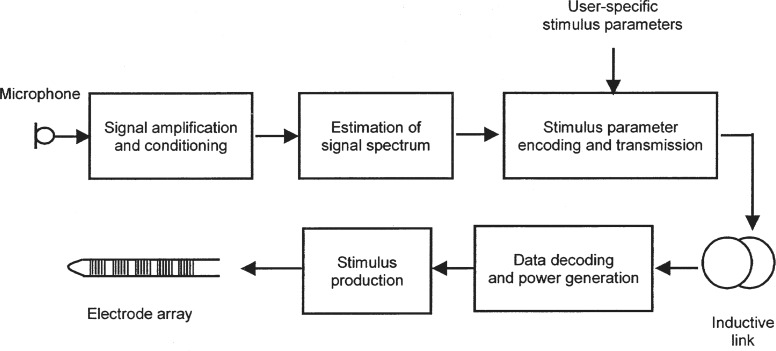Figure 1.
Schematic diagram showing the main functional blocks of a cochlear implant hearing prosthesis. In a typical multiple-channel system, sound signals are picked up by a microphone and passed to an amplifier, where they may undergo preprocessing such as filtering or compression. Next, the short-term spectrum of the signals is estimated. Suitable parameters of the electric stimulation to represent the spectrum are then calculated. These depend on a unique set of values that is determined for the individual implant user during device fitting and programming. The output of the sound processor comprises a digital code that is transmitted across the skin to the implant via a pair of coupled coils. An implanted receiver decodes the data transmitted by the external processor to obtain the parameters of the required pattern of stimulation. These parameters control a stimulator circuit that delivers electric currents to the array of intracochlear electrodes.

